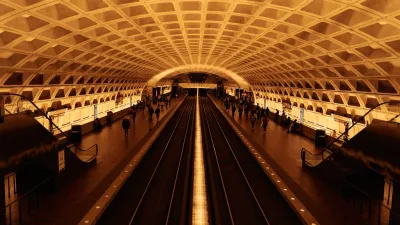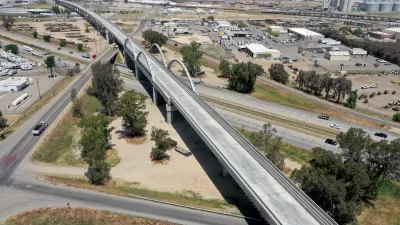Anthony Flint of the Lincoln Institute of Land Policy says the way to save high-speed rail policy is to focus on getting the two trains with the best chance of success on track.
The Lincoln Institute of Land Policy recently released a new report, High-Speed Rail: International Lessons for U.S. Policy Makers. The report says explains why it is a good idea to focus on California and the Northeast:
"These are connections between major cities that are too short to fly, and too long to drive, and could potentially open up labor markets in much the same way it works between cities in Europe. The projects are ambitious, face alignment challenges, and are not cheap – $50 billion for California (approved by citizens in a ballot question) and potentially $100 billion for a Northeast corridor replacement of the Acela, using new tracks in Connecticut and Massachusetts. But they promise a return on investment, as the international experience shows, and would create lots of jobs – 450,000 jobs through 2035 in California, according to that state's HSR Authority, and 44,000 jobs annually over 25 years plus 120,000 permanent jobs for the Northeast corridor, according to Amtrak."
For more coverage of high-speed rail, visit our sister site, The Railist.
FULL STORY: Can High Speed Rail Be Saved?

Alabama: Trump Terminates Settlements for Black Communities Harmed By Raw Sewage
Trump deemed the landmark civil rights agreement “illegal DEI and environmental justice policy.”

Planetizen Federal Action Tracker
A weekly monitor of how Trump’s orders and actions are impacting planners and planning in America.

The 120 Year Old Tiny Home Villages That Sheltered San Francisco’s Earthquake Refugees
More than a century ago, San Francisco mobilized to house thousands of residents displaced by the 1906 earthquake. Could their strategy offer a model for the present?

In Both Crashes and Crime, Public Transportation is Far Safer than Driving
Contrary to popular assumptions, public transportation has far lower crash and crime rates than automobile travel. For safer communities, improve and encourage transit travel.

Report: Zoning Reforms Should Complement Nashville’s Ambitious Transit Plan
Without reform, restrictive zoning codes will limit the impact of the city’s planned transit expansion and could exclude some of the residents who depend on transit the most.

Judge Orders Release of Frozen IRA, IIJA Funding
The decision is a victory for environmental groups who charged that freezing funds for critical infrastructure and disaster response programs caused “real and irreparable harm” to communities.
Urban Design for Planners 1: Software Tools
This six-course series explores essential urban design concepts using open source software and equips planners with the tools they need to participate fully in the urban design process.
Planning for Universal Design
Learn the tools for implementing Universal Design in planning regulations.
Clanton & Associates, Inc.
Jessamine County Fiscal Court
Institute for Housing and Urban Development Studies (IHS)
City of Grandview
Harvard GSD Executive Education
Toledo-Lucas County Plan Commissions
Salt Lake City
NYU Wagner Graduate School of Public Service





























